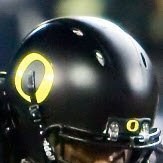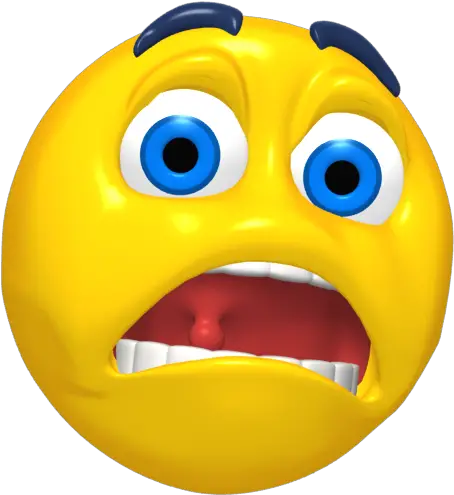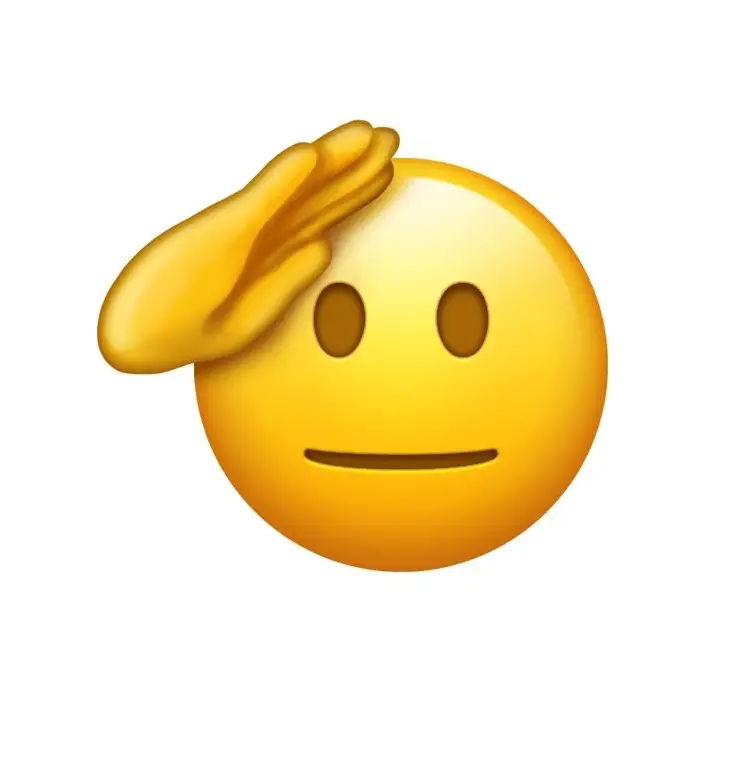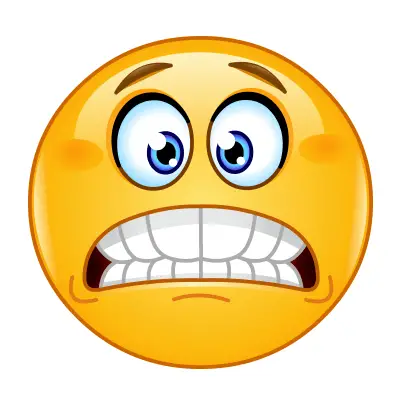Finish your profile right here and directions for adding your Profile Picture (which appears when you post) is right here.
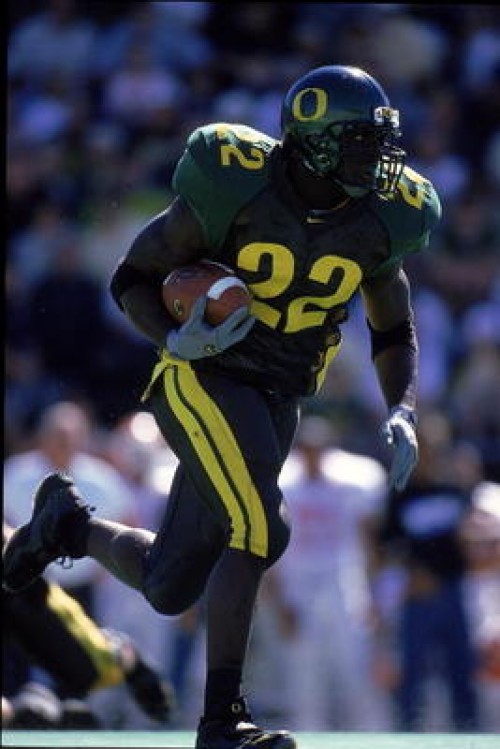
Everything posted by AnotherOD
-
Austin Novasad to Transfer
Kentucky has a RSo to be QB that played most of this season that apparently has fans pretty excited. He is a Kentucky kid who I guess was one of the highest rated in-state QBs to ever commit there back in 2024 (Cutter Boyle). He threw for 2160 yards leading UK to a 4-5 finish. I guess there was some panic he was going to jump in the portal with the coaching change and stayed (and there have been some comments from both Stein and new OC Joe Sloan backing Boyle as QB1). I don't see why Novosad would pick another spot where he enters as a junior behind a sophomore? (It sort of sounds a bit like Stein and Novosad would be starting their tenure off with some unhappy Wildcat fans and some extra pressure on both if Stein leapfrogged the popular in-state kid for a guy with 15 career passes)
-
Oregon vs. Texas Tech Pregame Discussion
In the signs it might not be your day department against Indiana. Oregon has an 11 play 71 yard drive end with a missed 36 yard FG with 0:23 second left in the 2nd by is normally reliable kicker. Sappington 48-56 on FGs over his career. 85.7%. Which is very good for a college kicker. In 0:23 seconds, IU was able to travel 40 yards in 3 plays. Indiana kicker Brenden Franke, a 6th year senior, with stops at Morningside College, Nebraska, Georgia Southern, Texas State, and Indiana, comes in and knocks in a 58 yard FG on the road with time expiring that today remains the only made FG of his college career. 1-3 career. Oregon goes in trailing 13-10 instead of leading 13-10.
-
Oregon vs. Texas Tech Pregame Discussion
Early random thoughts on the Texas Tech game. • Texas Tech is going to be coming off 25 days off, which probably means rust, at least in the first half. The 4 bye teams last year trailed at half by 10, 10, 14, and 26. • I am just not totally sure the B12 overall had a strong year. After Utah, BYU twice were their next two biggest wins and BYU was picked to finish 9th in the preseason poll. Sometimes that jump is totally legit and sometimes it is because most of the conference was expected to be good and wasn't. Someone has to finish 3-5. I watched Houston against Oregon State and the teams looked pretty even. They finished forth. Arizona finished 5th and well, it's still post-Fisch Arizona. Utah I think was very solid but they averaged 41 points a game? 41? I think they were beating up on some JAG conference opponents. 247 has a total team roster talent composition rating and ASU was overall #33, Utah #44, and BYU #70. Arizona was #67 and Houston #66. Oregon sits at #5. • Going to be a lot of talk about their D this week. TT loses to ASU and all we hear is their QB was out and that is fair; but, Tech actually took the lead 22-19, and were kicking off with 2 minutes left in the game. They get their 1985 Chicago Bears defense on the field to end the game. ASU goes 10 plays and 75 yards in 1:25 to take back the lead. In the drive TT gets ASU into a 4th and 2 with 0:55 seconds left for a walk-off win. Leavitt completes 33 yards to Tyson instead. Holding them to a FG means OT. ASU instead scores a TD to win 26-22. • I do expect a close game.
-
Ducks Into the Portal: It Started with Lowe and Now Includes . . . (Updated as the Players Announce)
There most likely will be more to come. Just how it works now. Just a guess, between 4-8 more. Nothing to do with the game yesterday.
-
Closer Than it Probably Should Have Been: Oregon vs JMU Box Score
The video of Davison needing to be helped to the locker room after the game in what looked like a very bad ankle bumbed me way more than some bad garbage time. ☹️
-
Define Success for Oregon
I have read 14 elsewhere too but really I think it really is more like 19? I can't find 8 returning starters? Stewart would be returning but I don't see how out-for-season can realistically be considered as actually returning? Tuioti played a ton but wouldn't have been considered a starter over Burch in the base 4-2-5. I don't point it out to be a pain; but, rather 14 to me underestimates the amazing job by Lanning and staff. 🙂 Gabriel James Tez Stewart Holden Ferguson Conley Jr. Cornelius Laloulu Harper Strother Burch Harmon Caldwell Uiagalelei Boettcher Bassa Muhammad Reed Savage T.Johnson B.Johnson
-
Alabama at Oklahoma: Let's Discuss!
This is a tough one. I pulled for OU the first time but I think Alabama/Indiana is a much better round two matchup (I would be interested to see what kind of creative ways DeBoer might come up with to attack IU's pass defense as I think both Oregon and tOSU attacked too much into its strengths). Either way Dan gets another shot at either DeBoer or Cignetti if Oregon can get past Texas Tech, which is fun. So go Bama tonight I guess? 😐
-
Is Dante Leaving For The NFL?
If Dante does enter the draft, I've got a "stranger things have happened" name. Nico Iamaleava. New staff at UCLA, some talk on UCLA sites, him returning there isn't currently guaranteed. The Duck staff obviously has familiarity with him due to him being a California kid and recruiting him. If he is interested and ready to attempt a Bo Nix type redemption arc, well, no better place. If a top portal name doesn't make sense for Oregon a second move might be the round of highly rated QB recruits who appear nearly locked into at least another year of sitting (who often portal). For example, it might be tough for Alabama to hold onto both Keelon Russell and Austin Mack (another California kid with a listed Oregon offer); or, Ohio State with Lincoln Kienholz and Tavien St. Clair. That sort of thing (imagine Ohio State fans if Kienholz or St. Clair joined Oregon). 🙂
-
Washington Does NOT Embarrass the B1G, Beating Boise State 38-10
And Husky fans don't seem to like Fisch much. They mostly liked Chris Petersen. In year two Fisch is already matching Petersen's biggest bowl win in six seasons as the UW head coach, the 2019 Vegas Bowl win 38-7 over Boise State. 😉
-
A Well Deserved Award for Mr. Mullens!
Maybe I missed it but I would have liked to hear a bit more about why the UO athletic department felt a one time relatively small upfront cash payment from private equity was necessary. Especially after already taking a haircut to join the conference, agreeing to be mid-tier. I mean, I think I sort of got it and it's fine but I don't know about award winning?
-
Holy Crap! You Will NOT Want to Overlook Gatlin Bair Joining the Team in January...
I can't remember too many former Ducks associated with missions (the two names I recall being Hamani Stevens and Brandon Bair who both worked out well). The discussions always involved around lineman or QBs. QBs because one worries about everything with QBs and lineman because big guys often tend to... continue to get big at that age. It has been said missions traditionally intentionally have been planned to not allow youngsters much if any time to pursue any serious outside endeavors (like training) for the very reason they didn't really want youngsters pursuing any serious outside endeavors (outside the mission). No real idea how accurate though.
-
Do the Ducks have a Secret Plan at Backup QB? I hope so!
I don't see anything that would disqualify Novosad one day from petitioning for a 6th year due to an injury this year that lingered and kept him out of games (outside of an emergency). The 6th year may not be a for sure thing (but if so) I imagine everything is being done to maximize his chances within the rules (including not making a bunch of unnecessay statements to please curious fans and media). Pre-NIL and settlement, missing out on a 6th year wasn't as big a deal; but, now, it can mean a bunch of money. Maalik Murphy got $1.5 million from OSU to go 2-10. Under the old rules where transfering was rare if a coach wanted to burn a year for 20 snaps, it nearly always happened. Now if a coach is making those kinds of calls, players are in the portal. After the injury, if Novosad decided it shut it down outside of an emergency, I have little doubt Dan would be behind it. Tip of the cap for hanging in for 2025. It makes more sense to me than Novosad totally falling off a cliff.
-
Rick Neuheisel and Chip Kelly Are Sniffing Around the WSU HC Job?
I was always a bit surprised Neuheisel never found another coaching stop somewhere after UCLA but, at this point, he has now been gone 14 years and I think turns 65 in February. Jerry is now 33, so maybe he is thinking coach 3-5 years and hope to hand it off to his son? Chip is 62 and must not be ready to get out of the game. I took a look at available sources and it looks like since coming to Oregon, Chip has earned about $82 million. I would hope he only jumps back into college head coaching if he is over whatever that exit at UCLA was. Has that happened? It would be a concern I think in hiring him. 6 colleges had head coaches 64+ this year: Belichick (73), Ferentz (70), Keeler (66), Whittingham (66), Fritz (65), Cignetti (64), and Mora (64); and, 2/6 have been their schools 27 and 22 years. Overall only 11 coaches were 60+. Given those ages and all the recent changes to the college game, as an AD, I don't think I could pull the trigger on either; but, I think both could probably fill some seats. Last year, WSU only averaged about 24,300 in attendance, behind several of its new conference foes (Fresno State 41k, Boise State 37k, Oregon State 36k, Colorado State 33k, San Diego State 25k). I guess after good numbers to start the year, attendance tailed off and ended up lower (about 23,200). I think FCS Montana averaged over 26k a game (so it almost has to be a bit of a concern).
-
B1G Championship Game Thread
Fielding misses a FG? Isn't this the guy Ohio State fans were sure was going to walk on the field and knock in the game winner at Autzen last year if they had not gotten "screwed"? The guy who also missed two against Michigan too?
-
Penn State AD Pat Kraft Despises Oregon
For those who missed, some of the transcripts. [ Adult language edited Kraft doesn't use fricking ] On the Oregon game and roster talent: "But because we play close to the number two team frick them that ain't the number two fricken team my team's better than them and I don't want you guys to fall victim to what the crowd is saying cuz when we're at the end of the year last we start fricken punishing people in the Oregon game it just I know we didn't come out with the outcome we wanted but man we played our fricken balls off and started moving people and moving people that was a small glimpse" On Penn State’s location and recruiting disadvantages: "I'm so glad you brought that up because that's the question we're asking them we matter we probably need to fricken change the way we recruit, cuz Alabama ain't around crap in South Carolina oregon have you all been to Oregon no sh_t here ain't sh_t going on it's a bunch of fricken weirdos... ohio State it's the one thing our fans don't understand it's a city there's no doubt there is no doubt but I thought that would be like one of the biggest things that I agree... but like to your guys you're all saying it and we're giving you an insight of what we're we're interviewing like what we're talking to Terry about later this afternoon it's like that crap like so how do you fix that like I can't tell I'm not wired you're not wired he'll be like frick it we're at Happy Valley" On National Championship contenders: "Those are the things we have to get addressed if we are going to actually win a national championship. Which is what we will do here that's what Ohio State Michigan is a pains me to fricken say and George Bama and Oregon right now although I think they're frauds" On Penn State culture vs. Oregon/Nike: "The Penn State thing is real i'm not dismissing that but the Penn State thing doesn't get you the Penn State job, the plan and how you embrace the Penn State culture gets you the Penn State head coaching job right that's why Terry has the upside... why you think fricken Phil Knight Phil Knight they fricken got the Nike the whole Nike Deal Like that's why they won't win a national champ" On NIL money and Texas: "... my buddy is the guy behind Texas i tell these guys he put $22 million of his loan money into Texas he put he gave the $5 million to Archie and it's like they pay 65 guys they pay 65 guys and they gave $5 million to Arch Manning footnote oh by the way everybody else gets a scholarship i know we don't care about scholarships anymore but you still get the scholarships right they get the off and all that and if you don't you're out georgia Oregon what they do you're late for class $10,000 fine that's how they get their money back" On winning expectations: "We ain't fricken trying to win six seven fricken games trying to win the whole fricken thing and we damn know let's just call it what it is it's two fricken games got to win you get past Ohio State Oregon whoever the fricken game like that's it everybody else should fricken blow their fricken doors off they don't hold a fricken candle to you all".
-
Oregon No. 5 in CFP Playoff Rankings
I think I read Oregon had a 25 day layoff last year before tOSU (12/7 to 1/1). If Oregon gets a first round game, it still ends up being 21 days (11/29 to 12/20). If it gets a bye, it is going to be 33 days (11/29 to 1/1). As an Oregon fan I don't think it's good to have anything to do with 33 days. Going back to 2010, Oregon/Auburn faced the longest layoff between the end of a season and the final, 37 days (12/4 to 1/10). While entertaining, I'd argue the first half wasn't at all sharp by either team. At least both teams had to deal with it. In the case of this season, the bye teams coming off a layoff of 33 days face a team playing after 11 days off. I think there is again a good chance the bye teams all at least go into a first half hole. ASU (down 17-3) Oregon (down 34-8) Boise State (down 17-7) Georgia (down 13-3) It all looks pretty good right now for Oregon. I think most Duck fans already are pulling for Georgia, but I think it really doesn't want an Alabama win throwing a monkey in the wrench.
-
Stein vs. Stein Offense Statistics
Comparing the Stein years? Well, one could also use something like Offensive FEI (opponent-adjusted offensive efficiency, scoring advantage per non-garbage time possession) over at BCSToys? 2023 1 Oregon 1.13 2 LSU 1.09 3 Georgia 0.85 4 Washington 0.65 2024 1 Ohio State 0.81 2 Oregon 0.76 3 Miami 0.73 4 Indiana 0.63 2025 1 Vanderbilt 1.01 2 USC 0.81 3 Oregon 0.75 4 Old Miss 0.72 A dip in non-garbage time offense from year one to three with all 3 seasons firmly elite level? If Stein did stay another year the trend would suggest another dip to 4th in the nation on offense in 2026. Offensive F+ shows a similar pattern.
-
Stein vs. Stein Offense Statistics
It took me a minute to figure out what this chart is trying to do. The colors make it a bit confusing. If the team averaged 310, 309, and 308 yards rushing in three consecutive season, one would be good, one would be so-so, and one would be bad. 300+ yards rushing is just good in all three years. Suggesting 310 would be a good year but 307 bad seems silly (as does highlighting dropping from 310 to 307 as significantly notable). I'd enjoy a chart with the same data that used generally accepted averages of good, average, and poor in each category and used colors to see how the offenses has done under Stein against those.
-
Tosh to Cal
Penn State may very well be the big early signing day story tomorrow. I think they are down to 5 commits and all 5 I guess are either on flip watch or at least not expected to sign early. There seems to be the possibility they have 0 early signings tomorrow.
-
USC Buying It’s 2026 Recruiting Class a la A&M
USC locked down three Mater Dai commits back in April and May, with some reported significant NIL assets (Bowman, Topui, and Scott). Mater Dai had what for them was a bit of a down year. I of course don't follow the Trinity League that closely but the long time mod at the USC site Wildwest Sports (Java) does. His recent comments on the three? "I said this team is overrated. They are undisciplined. They are ghetto. And almost all the players that USC is getting I truly do not like... going 7-3 or 8-3 with that talent is embarrassing. Mater DEI should fire (head coach) Lara and USC should pull the scholarships of Bowman, Scott and the fat kid (Tupui) in the middle. Or let Bowman redshirt." Who knows of course, but found it interesting given the fanfare going along with USC's class this year. 🤷♂️
-
And There Goes Another: Cal fires Wilcox
Not sure exactly how accurate it is, but I've read Boise State and Auburn fans suggest by comparison Harsin makes Bryan Kelly look charming. I think Oregon kicked the tires on Harsin in both 2017 and 2021. It certainly could be argued that had potential disaster written all over it.
-
And There Goes Another: Cal fires Wilcox
I imagine there are more than a few of us keeping an eye on what happens at Florida (and who they hire) if a certain freshman WR (briefly signed then released by Oregon) who went through an unfortunate injury plagued freshman season might be open to a fresh start? 6-3 and 215 would compliment Dakorien, Evan Stewart, and McClellan nicely in 2026. As well, (a Duck runner-up) freshman CB at LSU (who has looked very good), might consider a change with their new staff (though if he can handle Brian Kelly he probably can handle just about anyone). Odds for either a huge longshot but...
-
(Non) Availability Report For UO & USC
Looks like Crader is warming up with the ones and World with the twos. My guess is they are going to rest him if they can get by.
-
(Non) Availability Report For UO & USC
Yikes. Any idea what the plan would be at LT? Rogers? Bedford? Crader? Not ideal if World can't go.
-
On To USC
From advanced stats, not including the Oregon/Minnesota and Iowa/USC games (only non-garbage time regulation snaps): Points Per Drive: USC: 3.71 (#2) Oregon: 3.33 (#8) However, Points Allowed Per Drive: Oregon: 1.13 (#4) USC: 2.26 (#72) And yards per play: USC: 8.07 (#1) Oregon: 7.19 (#5) Defensive yards per play allowed: Oregon: 3.75 (#1) USC: 6.07 (#92)




